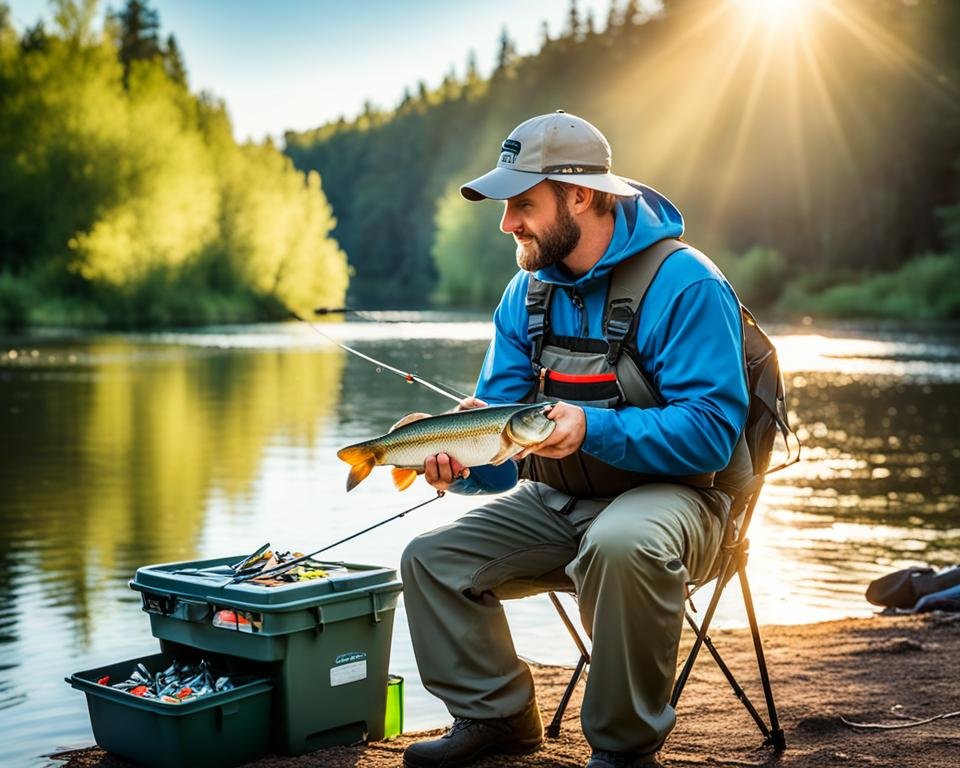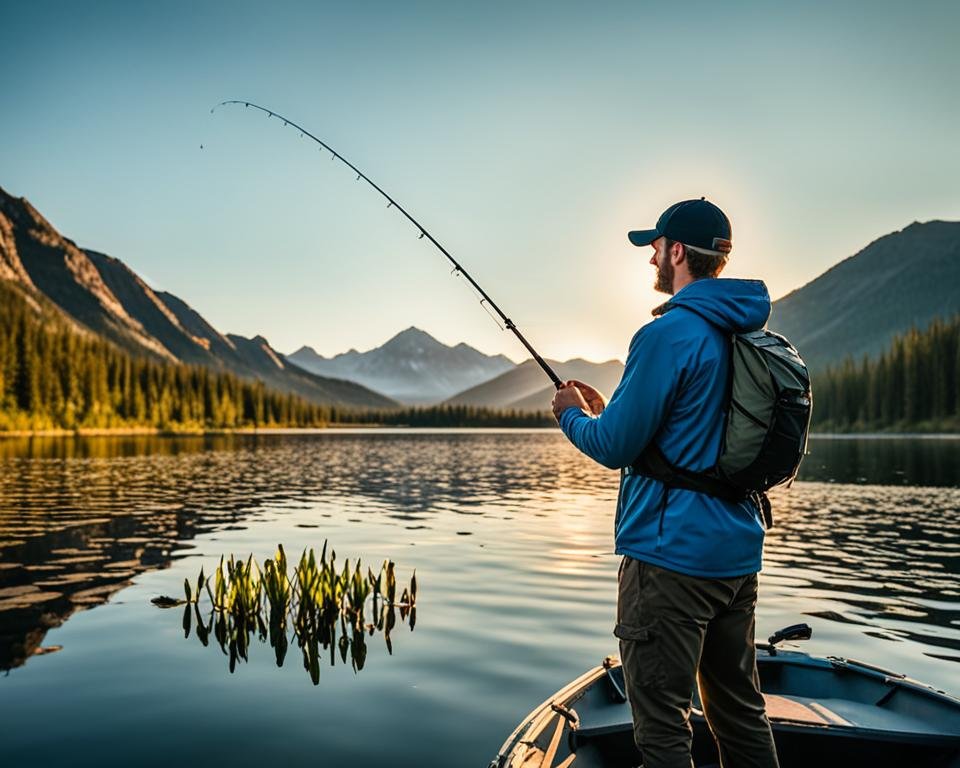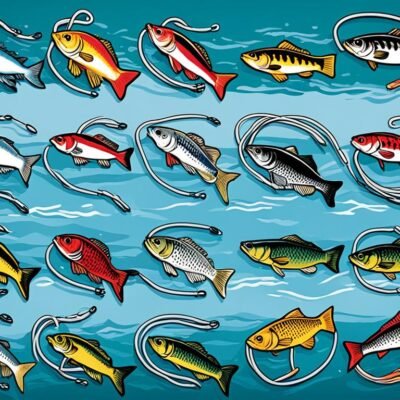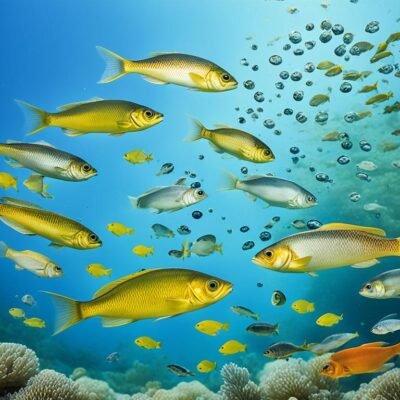Welcome to our comprehensive beginner’s guide to angling techniques. Whether you’re a novice or looking to brush up on your skills, this guide is here to help. Fishing is a popular recreational activity that allows you to connect with nature and challenge yourself in a serene environment. In this guide, we’ll cover the basics of angling and provide you with valuable tips and tricks to enhance your fishing experience.
Angling techniques for beginners can seem overwhelming at first, but with the right information and practice, you’ll soon be reeling in your first catch. From choosing the right fishing gear to understanding different fishing techniques, we’ll provide you with all the essential knowledge to get started on your angling journey.
Throughout this guide, we’ll share expert advice from experienced anglers and provide step-by-step instructions to help you master the art of fishing. With our tips, you’ll be well-equipped to handle any angling situation and increase your chances of success on the water. So, let’s dive in and discover the exciting world of angling techniques for beginners!
Fishing Basics for Starters
Welcome to the world of fishing! In this section, we will introduce you to the essential fishing basics that will set you on the path to becoming a skilled angler. By the end of this section, you’ll have a solid foundation in fishing techniques that will lay the groundwork for your angling adventures.
Essential Gear for Fishing
Before you hit the water, it’s important to have the right gear. Let’s start with fishing rods and reels. There are various types available, such as spinning rods and baitcasting rods, each suited for different fishing techniques and target species. Pair your rod with a compatible reel, such as a spinning reel or a baitcasting reel, and you’re ready to go.
Next up, fishing lines and hooks. Fishing lines come in different materials, such as monofilament, fluorocarbon, and braided lines, each with its own benefits. Choose a line that suits your fishing style and the type of fish you’re targeting. As for hooks, there are different sizes and designs for various fishing applications. Make sure to select the right hook size for the fish you want to catch.
Selecting the Right Bait
Choosing the right bait is crucial for attracting fish. Live bait, such as worms and minnows, can be highly effective. Artificial baits, such as soft plastic lures and crankbaits, are also popular choices. The type of bait you choose will depend on the species you’re targeting and the fishing technique you’re employing. Experiment with different baits to find what works best for you.
Casting Your Line
Once you have your gear and bait ready, it’s time to cast your line. Casting is the process of releasing your fishing line into the water. To do this, hold the rod firmly, release the line with your free hand, and swing the rod forward in a smooth, controlled motion. Practice your casting technique to improve your accuracy and distance. Remember, practice makes perfect.

By familiarizing yourself with the fishing basics covered in this section, you’ll be well on your way to becoming a confident angler. In the next section, we’ll dive deeper into valuable tips and techniques specifically tailored for beginners. Stay tuned for more fishing insights!
Beginner Fishing Tips and Techniques
If you’re new to fishing, don’t worry! We’ve got you covered with some beginner fishing tips and techniques to help you get started on your angling adventure. These tips are designed specifically for novices, offering easy fishing techniques for beginners to build their skills and increase their chances of success on the water.
First and foremost, selecting the right fishing spot is crucial. Look for areas that are known to have a high concentration of fish. This could be near structures like rocks, fallen trees, or underwater vegetation. Pay attention to environmental factors such as water temperature and current, as these can also affect the fish’s behavior.
Once you’ve found a promising fishing spot, it’s essential to understand the behavior of the fish species you’re targeting. Different fish have different feeding habits and preferences, so do your research and learn about their behavior patterns. This knowledge will help you choose the right bait and fishing techniques.

Bottom Fishing
One popular fishing technique for beginners is bottom fishing. This involves dropping your baited hook to the bottom of the water and waiting for the fish to bite. It’s a straightforward technique that can yield excellent results, especially for bottom-dwelling species like catfish and snapper.
Trolling
Another technique to try is trolling. This involves moving your boat slowly through the water while dragging your fishing line and bait behind you. Trolling allows you to cover a larger area and is effective for catching fast-swimming fish like salmon and trout. It’s a great way to explore different fishing spots and find where the fish are biting.
Fly Fishing
For those looking for a more hands-on and immersive fishing experience, fly fishing is a fantastic option. This technique involves using a specialized fly rod, line, and artificial flies to mimic insects or small fish. It requires some practice and finesse, but once you get the hang of it, fly fishing can be incredibly rewarding. It’s particularly effective for catching trout and other freshwater species.
Remember, as a beginner, it’s important to keep practicing and honing your skills. Fishing is a skill that develops over time, and each fishing trip is an opportunity to learn and improve. Be patient, observe the water, and listen to the advice of experienced anglers. With some dedication and a little bit of luck, you’ll soon become a skilled angler.
Conclusion
As we conclude this beginner’s guide to angling techniques, it is important to remember the key points we’ve covered. Practice, patience, and perseverance are essential when it comes to mastering the art of fishing. By dedicating time to honing your skills, you’ll soon find yourself reaping the rewards of this rewarding and exciting hobby.
Whether you’re aiming to catch your dinner or simply enjoy the serenity of the water, angling offers an opportunity to connect with nature and unwind from the stresses of everyday life. With the knowledge gained from this guide, you now have the tools to become a skilled angler and make the most of your fishing adventures.
Remember, success in fishing may not always be measured by the size of your catch. Cherish the moments spent on the water and the memories you create along the way. So grab your gear, find the perfect fishing spot, and embark on your journey to become a true angling enthusiast. Tight lines and happy fishing!
FAQ
What are angling techniques?
Angling techniques refer to the various methods and strategies used in fishing to catch fish. These techniques include casting, trolling, bottom fishing, fly fishing, and more.
How do I select the right fishing spot?
To select the right fishing spot, consider factors such as the type of fish you’re targeting, water conditions, and the presence of underwater structures or vegetation that attract fish. Researching local fishing reports and talking to experienced anglers can also provide valuable insights.
What gear do I need as a beginner angler?
As a beginner angler, you’ll need a fishing rod and reel, fishing line, hooks, sinkers, and bait. It’s also recommended to have a tackle box to organize your gear and a fishing net to safely land your catch.
How can I improve my casting technique?
Practicing your casting technique is key to improving accuracy and distance. Start by standing with your feet shoulder-width apart, hold the rod with a relaxed grip, and use a smooth motion to cast. Pay attention to the timing of releasing the line and practice regularly to develop muscle memory.
What is trolling in fishing?
Trolling is a fishing technique where you drag a lure or baited line behind a moving boat. This method allows you to cover a larger area and target fish that swim at different depths. Adjusting the speed of the boat and choosing the right lure or bait are essential for successful trolling.
How do I choose the right bait for fishing?
The choice of bait depends on the type of fish you’re targeting. Live bait such as worms or minnows are often effective for a wide range of fish. Alternatively, artificial lures can mimic the movement of baitfish or insects, attracting predatory fish. Experimenting with different baits and observing the preferences of fish in your area can help you find what works best.
Is fly fishing difficult for beginners?
Fly fishing can be challenging for beginners, as it requires learning specific casting techniques and using specialized gear. However, with practice and guidance from experienced anglers or instructors, it can be a rewarding and enjoyable fishing method to pursue.
What should I do if I don’t catch any fish?
Fishing is not always guaranteed to result in catching fish. If you’re not having luck, try changing your bait, adjusting your casting technique, or exploring different fishing spots. Patience, observation, and persistence are important qualities for any angler.




